“Bhutan, a journey that takes you beyond the ordinary and into the realm of the extraordinary.” ~ Unknown
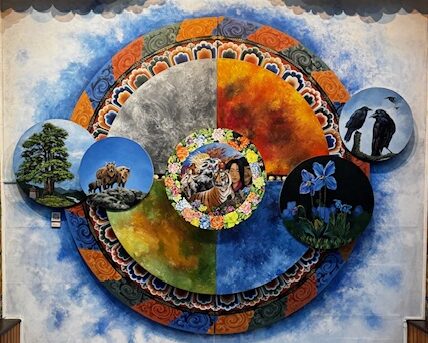
Paro, Bhutan
I’m already starting to miss this faraway Shangri-la with just two days remaining of exploration; all culminating with a childhood dream.
Bhutan National Museum (Ta Dzong)
Ta Dzong, the Bhutan National Museum, was originally constructed in 1649 as a watchtower. Its unique circular structure is unlike any other fortress in the country. Think of it as the Paro Guggenheim Museum; where the art patron starts on its upper floors and works their way down in a clockwork fashion; all along, experiencing amazing artifacts spanning centuries.
The Ta Dzong fort was converted into a museum in 1968 by King Jigme Dorji Wangchuck to preserve the country’s cultural legacy. The museum houses over 3,000 of the finest works of Bhutanese art, covering more than 1,500 years; including masterpieces of bronze statues and paintings. Believe me when I say how remarkable the collection is; for upon entering, our phones were confiscated by our driver – they take NO PHOTOS ALLOWED very seriously.
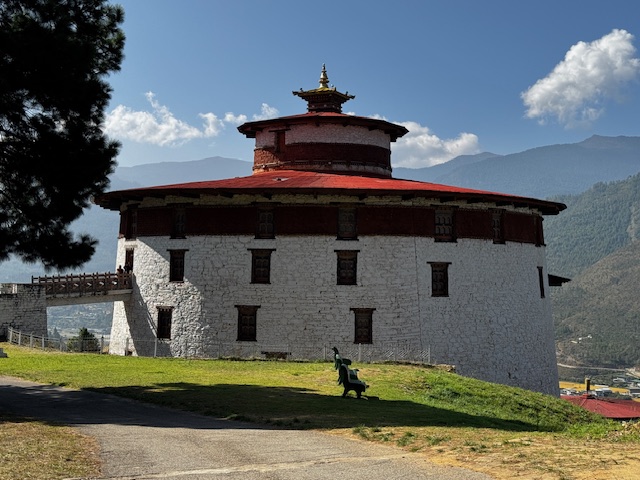

The building has seven floors, built into the side of a mountain each representing an aspect of the culture and history:
• Ancient Thangka Paintings: a unique display of fabrics and textiles, royal attire, and weaving traditions.
• Masks from Religious Festivals (Tsechu), used in sacred Cham dances performed by monks.
• Weapons & Armor, including swords, shields, and bows.
• Buddhist Relics & Artifacts: sacred objects linked to its deep spiritual roots.
Personally, some of the my favorites were the Ancient Thangka Paintings. Their minute attention to detail entrances and enthralls.
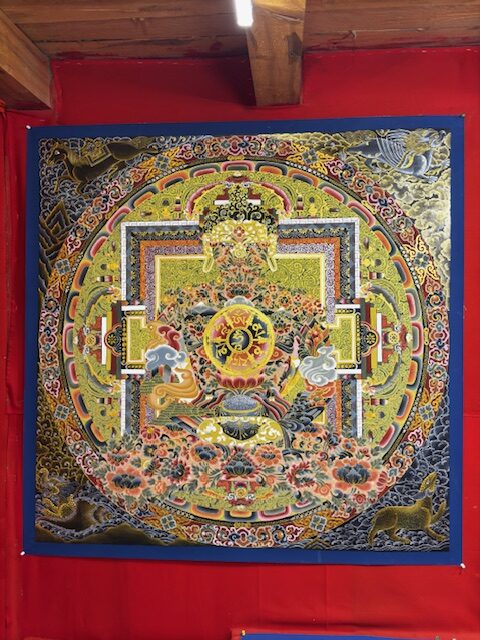
Rinpung Dzong – The Fortress of Bhutan’s Paro Valley
Rinpung Dzong, meaning “Fortress on a Heap of Jewels,” is one of Bhutan’s most majestic and significant dzongs (a fortress, serving as a religious, administrative and cultural center for the region). The stronghold is perched high on a mountainside overlooking Paro Valley, providing both a defensive advantage and stunning views.
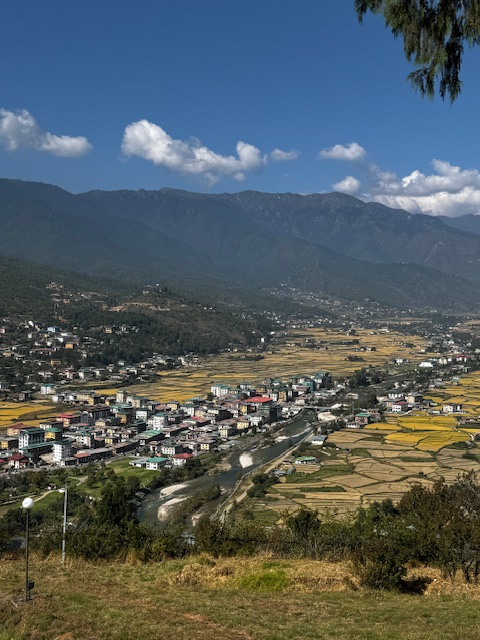
Built in 1646 by Zhabdrung Ngawang Namgyal, unifier of Bhutan, it served as a bastion against Tibetan invasions in the 17th century. It continues to function as a monastic and administrative center, housing both monks and government offices.
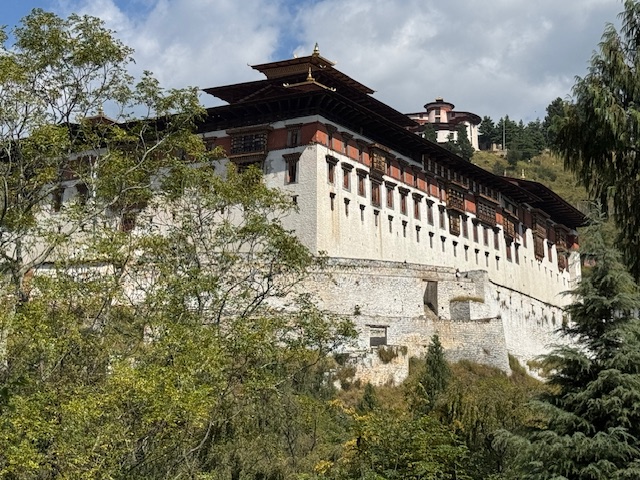
Its picturesque access is reached by a cantilevered wooden bridge over the Paro Chhu River. The dzong made its Hollywood closeup and debut in the 1993 film “Little Buddha” by Bernardo Bertolucci.
Within its compound are massive, whitewashed stone walls, wooden balconies, and intricate carvings. The main temple structure is at the heart of the dzong and features intricate murals and sacred relics.
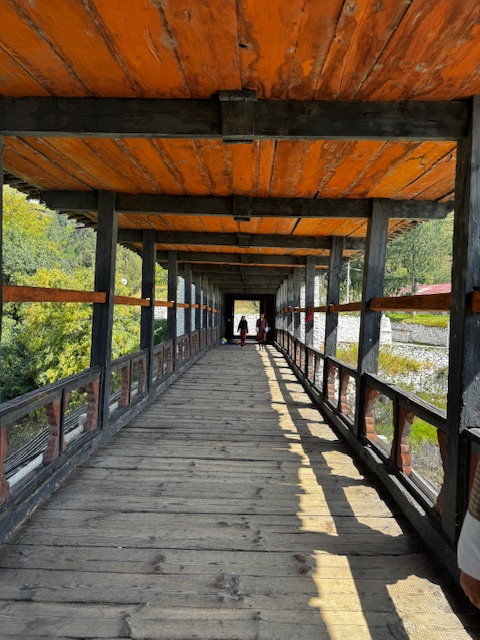
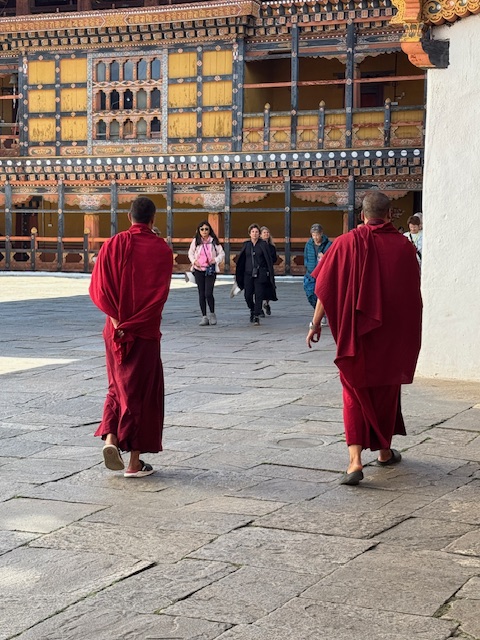
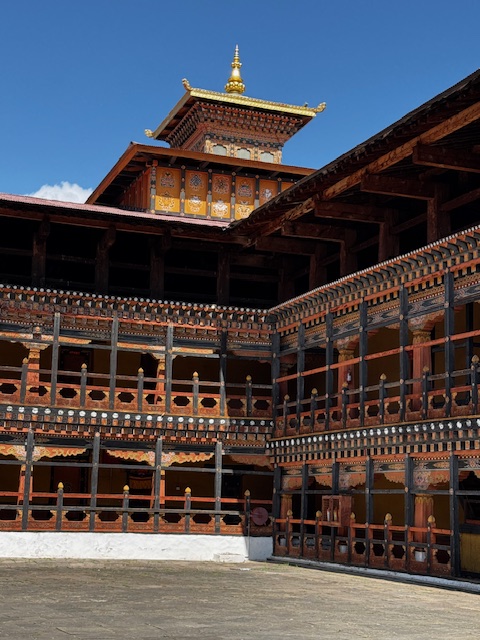
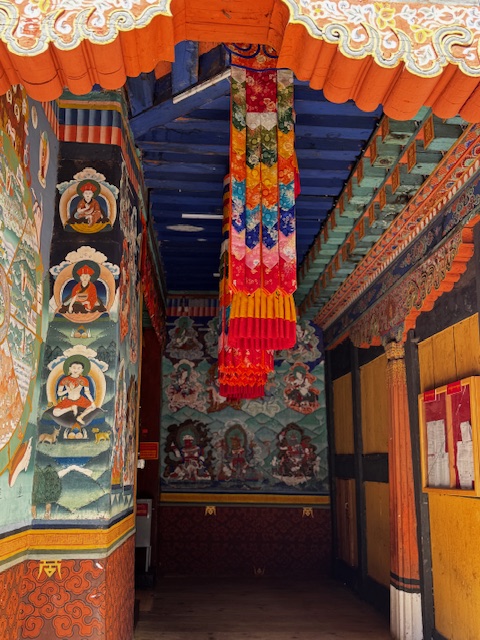
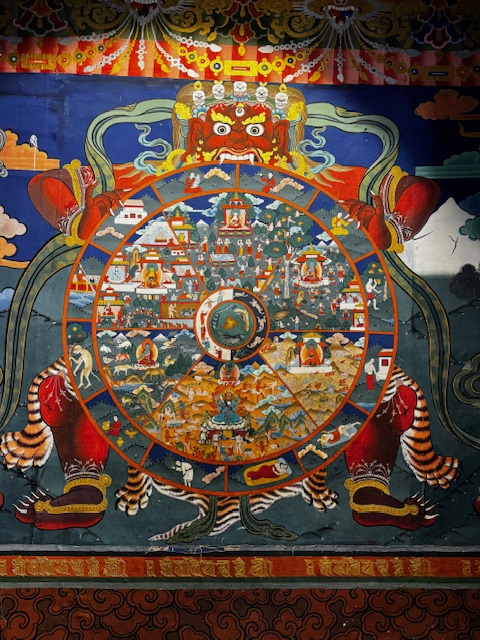
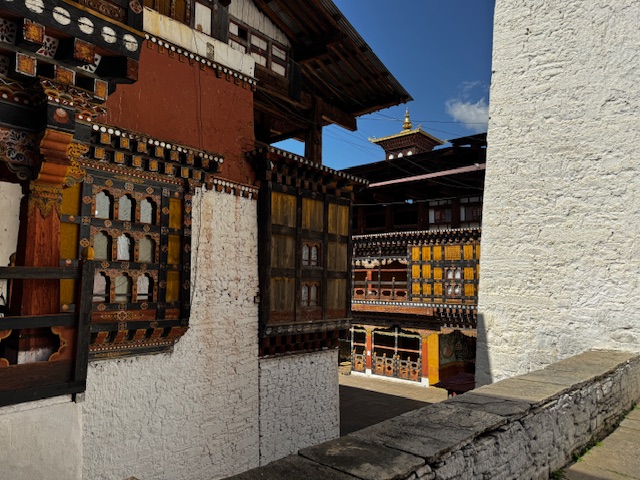
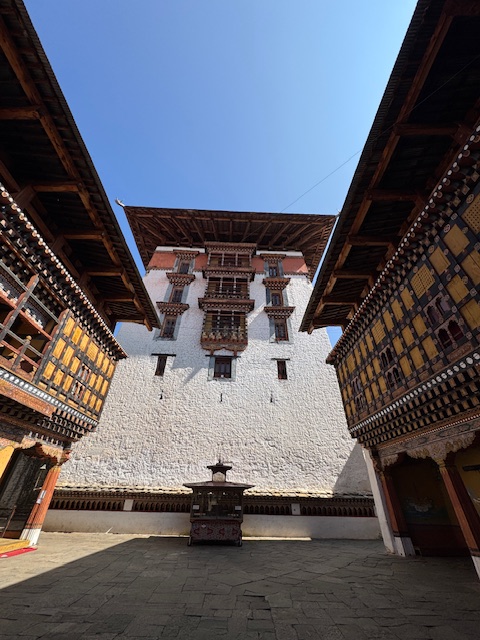
We had the opportunity to hear monks of all ages practicing on traditional Tibetan horns. These long, conical horns are typically made of brass or copper and are used in religious ceremonies.
The horn is a sacred instrument; producing a deep, resonating sound that’s believed to summon divine energies or represent the Buddha’s voice. It’s often played during rituals and festivals to accompany chanting, prayers, or to invoke a meditative atmosphere.
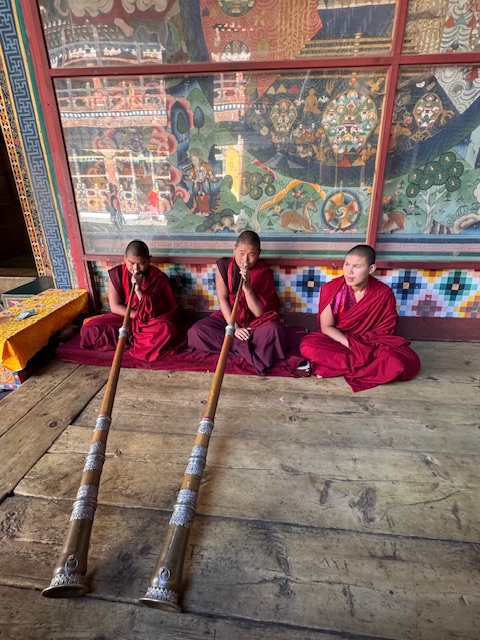
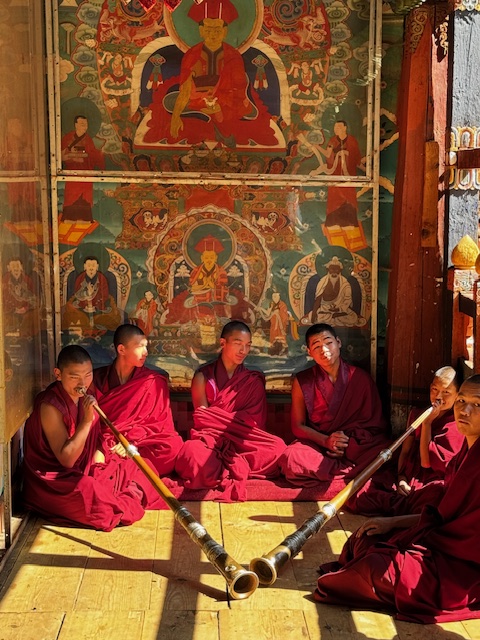
Let’s just say that to this untuned ear, they still have a big learning curve ahead!
Incense Workshop
What’s a Himalayan trip without a stop at a traditional incense-making workshop? Incense holds deep spiritual significance and is used for prayers, meditation, and purification rituals.
Local ingredients are sourced: herbs, tree barks, medicinal plants, and juniper berries. All are ground, mixed, kneaded, and rolled into long sticks or coils.
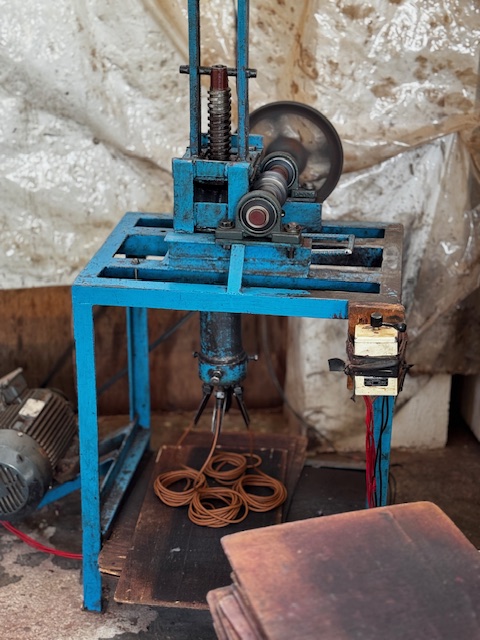
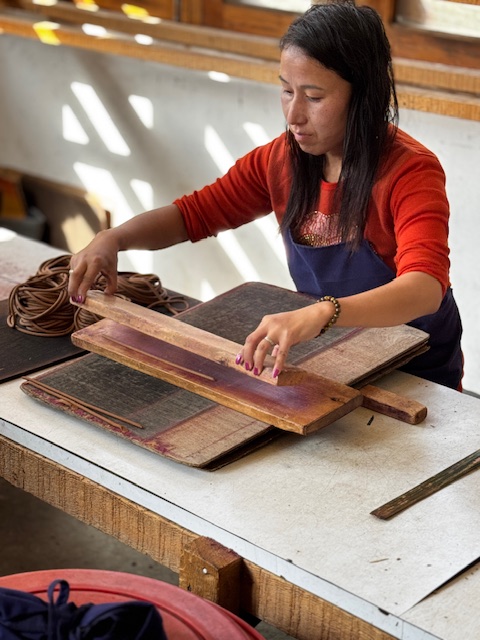
The heady aroma of the ingredients and the lightly scented, smoke-filled environment of the workshop felt like a purification ritual. A few sticks made into my suitcase to enlighten our home and appease the spirits.
Mandala Arts Center
I described the process of the mandala in my last blog. Today, we’re at an arts center where mandalas are created by local artists. What a treat to watch a professional laboriously drop each speck of sand into their design.
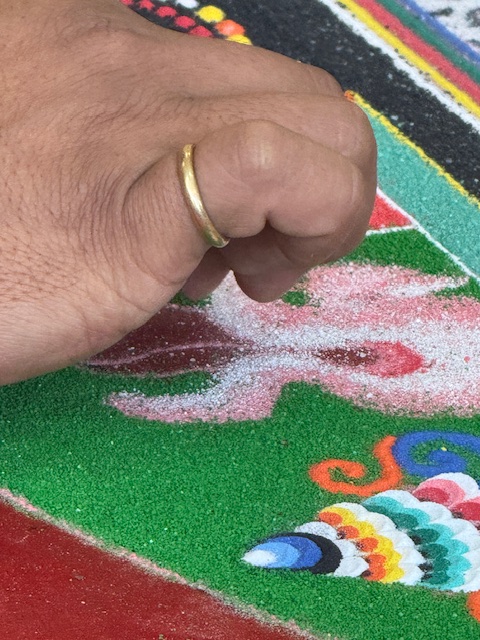
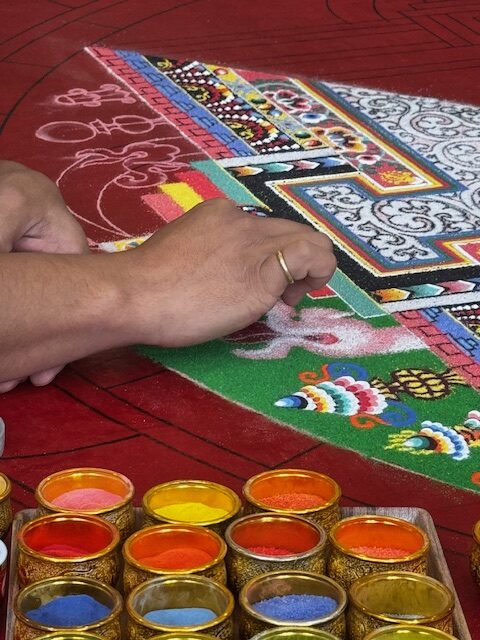
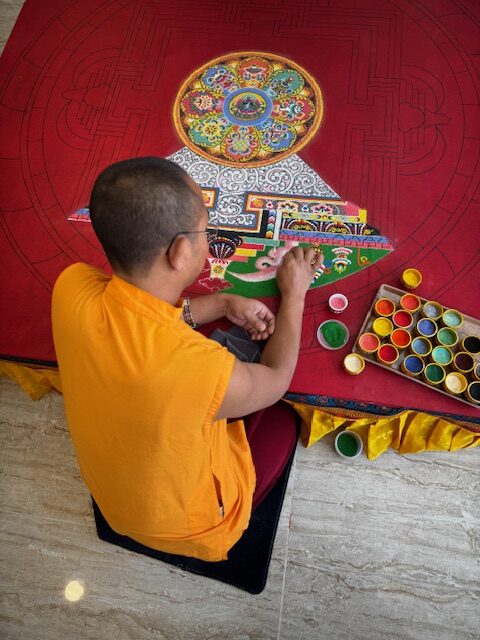
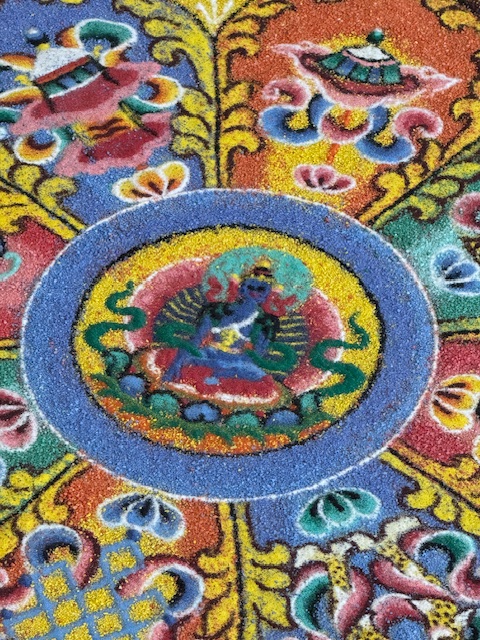
Here again we had hands-on experience, only to destroy our work after its completion, like we did prior. Why destroy such a beautiful piece of art, especially after hours of painstaking, intense work and mindful concentration? In the context of Buddhism, it’s a symbolic practice with deep spiritual meaning.
Overall, the destruction of the mandala emphasizes key Buddhist principles like impermanence, non-attachment, and the importance of giving. Pray tell, a bit of patience is a necessary given.
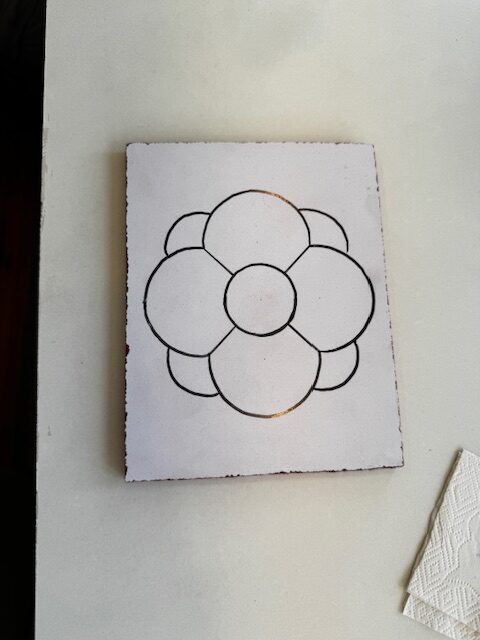
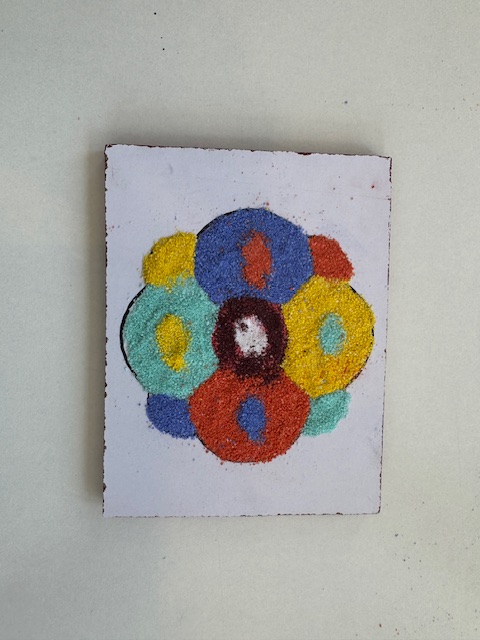
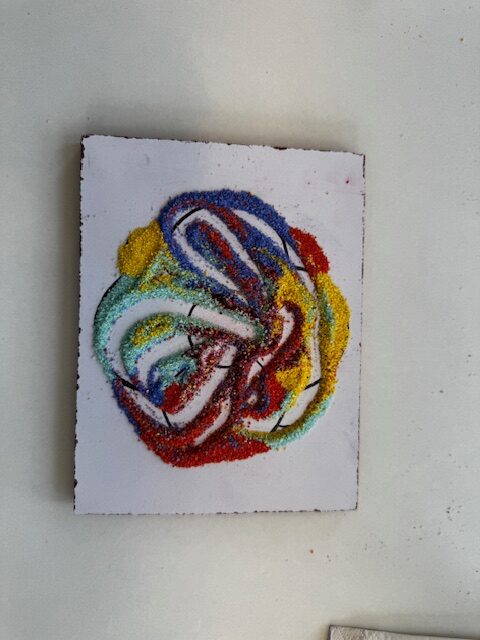
Romance in the Himalayas
Call me a hopeless romantic, but we were privileged to bear witness to a special ceremony that topped all the Himalayas’ peaks …
Unbeknownst to us, our fellow traveler, Diana, was celebrating her 50th Birthday, and her partner, Michael, arranged with Leki, our fierce tour guide, to have an incredible special ceremony in her honor at a private temple. Can you beat that?!
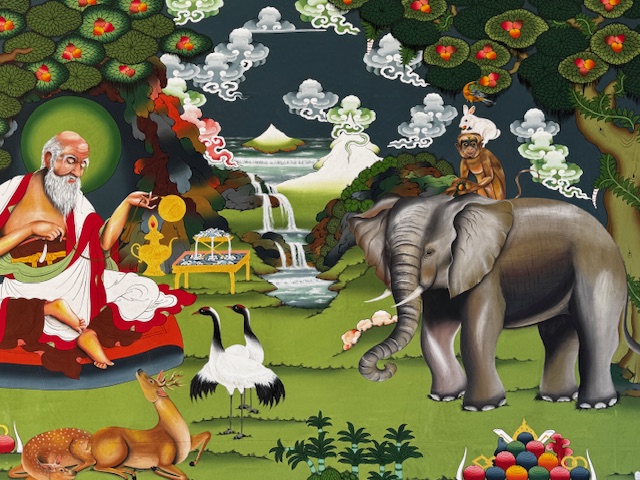
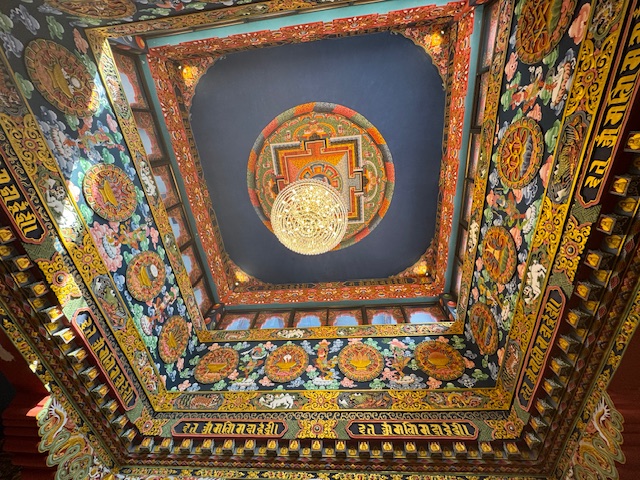
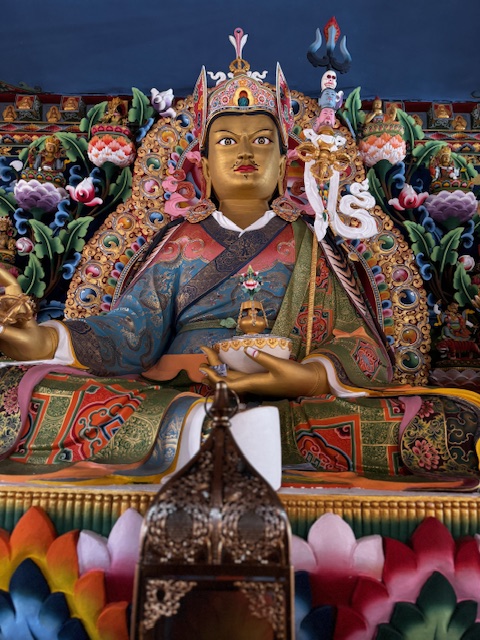
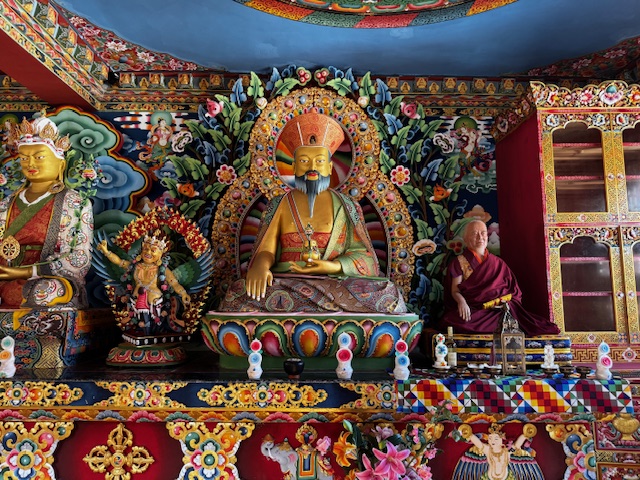
Since this was a private temple still under construction, and not consecrated, pictures were allowed, and we all went nuts shuttering away.
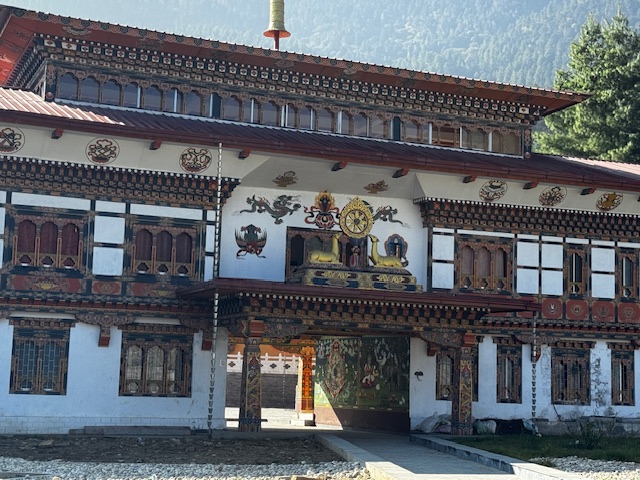


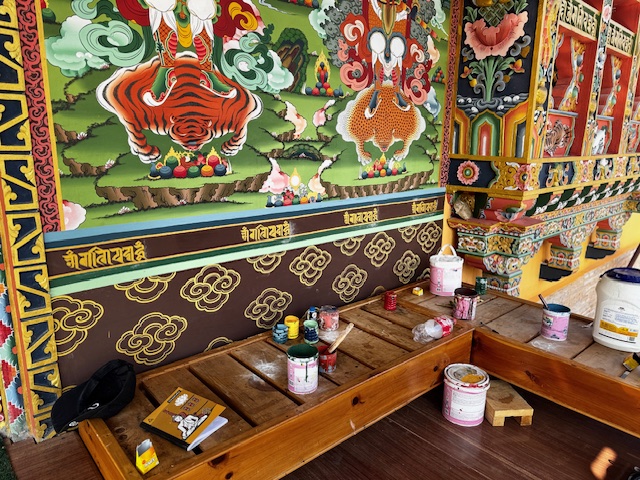
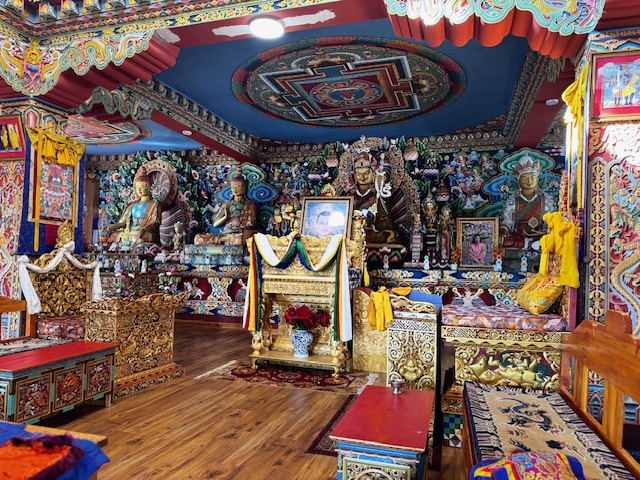
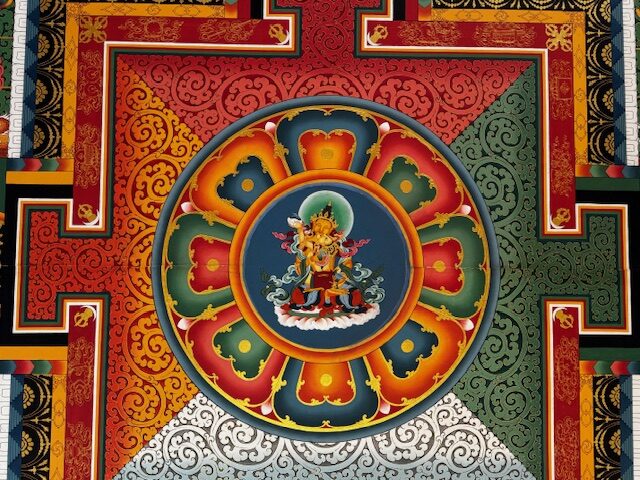
50 butter candles were arranged into a shape representing the “Endless Knot,” aka the Glorious Knot or Mystic Knot. It’s a significant and ancient symbol, one of the Eight Auspicious Symbols in Tibetan Buddhism and holds profound meaning.
The Knot’s design, with its continuous flow, signifies the uninterrupted, continuous progression of spiritual practice and understanding.
Looked upon as a good luck symbol that brings positive energy, longevity, harmony, and blessings, believed to attract happiness and good fortune.
We were stunned by Michael’s gesture as was the recipient of such a thoughtful gift. Happily, all participated in the ceremony by lighting one of her candles. I felt honored and blessed at that special moment.
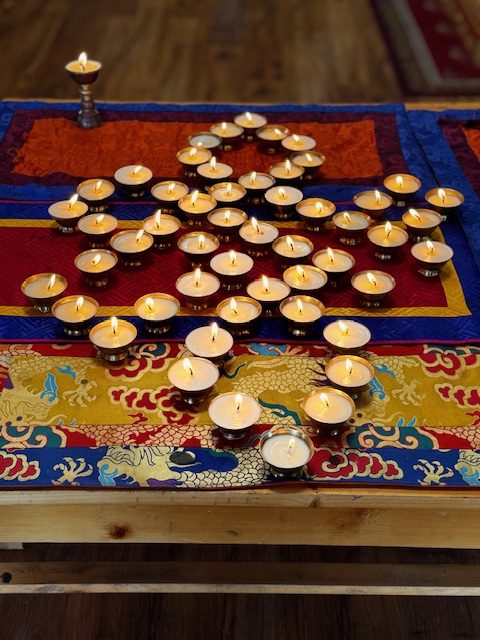

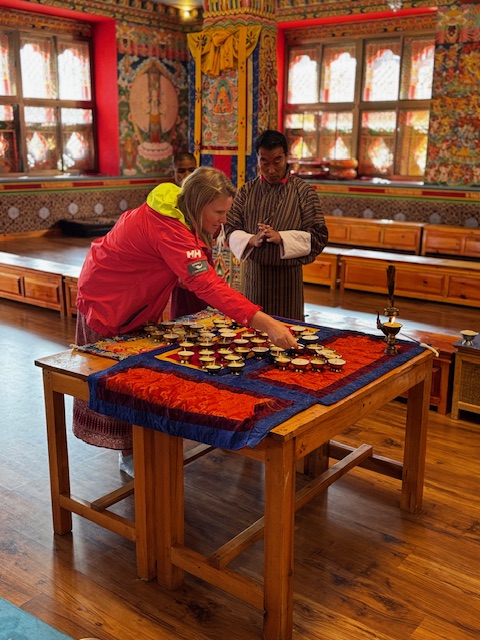
Truth be known, I got a bit verklempt – my eyes getting a little moist, as this awe inspiring show of love and devotion overtook me. Oh, L’Amour! L’Amour! Later, walking back to the bus, I told Michael that he was my hero, and what are your plans to top this?!
Tiger’s Nest Monastery
As a child, I remember reading old copies of National Geographic magazines, and coming across this imposing building hanging precariously on a cliff’s ledge. At the time, my young mind wandered and wondered about its construction, its purpose, location and plainly asking, “WHY?!”
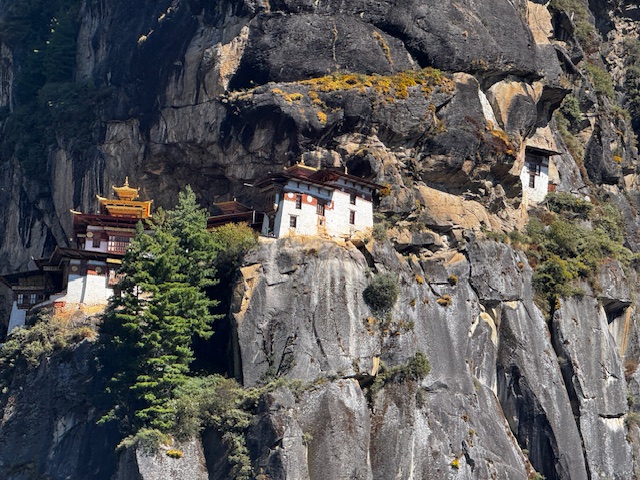
Here we are six decades later, and I realized that one of my earliest dreams was about to take place – visiting one of the most iconic and sacred monasteries in the world. We’re talking about the Tiger’s Nest Monastery just outside Paro. It’s one of the most venerated places of pilgrimage in the Himalayas.
But I dare you on to try getting there …
Arriving far below, looking way up, there in all its magnificence, a glorious vision to behold; perched nearly vertically and most dramatically on a cliffside was the Tiger’s Nest; about 3,000 feet above the Paro Valley, at an altitude of 7,218 feet; add both numbers together and you’re at 10,218 feet above sea level!
It’s believed that Guru Rinpoche (Padmasambhava), the founder of Vajrayana Buddhism in Bhutan, meditated here in the 8th century after arriving on the back of a flying tigress, hence the name “Tiger’s Nest.”

The monastery was built in 1692 by Gyalse Tenzin Rabgye, though renovated multiple times due to fires and natural wear. A stunning example of architecture, with white walls, golden rooftops, and intricate woodwork, all blending into the rugged mountainside.
Quick footnote: 5,000 miles away, in that same year, 1692, the Massacre of Glencoe, Scotland took place, where 40 members of the MacDonald Clan were slaughtered. It was a year ago that we stayed in another gorgeous mountainous valley – Glencoe Valley. Ahh … the way of the world!
The monastery is built around 13 holy caves, where Guru Rinpoche and other great Buddhist saints meditated. It’s believed that some of these caves contain hidden spiritual treasures (termas) meant to be discovered by enlightened masters in the future.

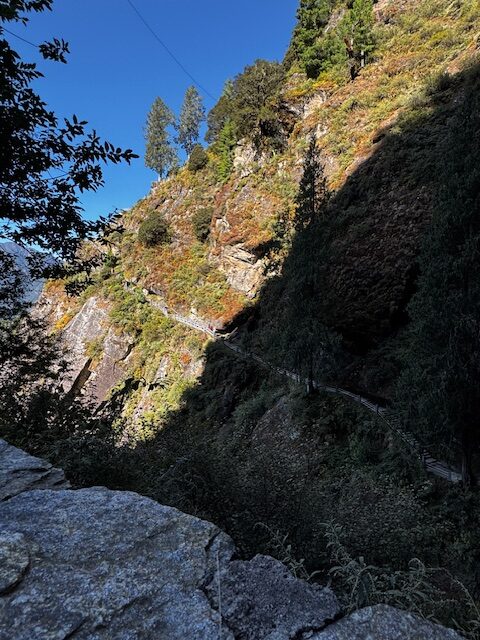
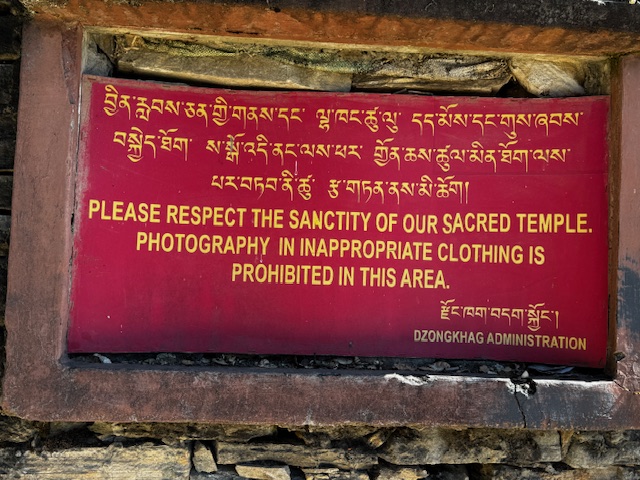
The trek up begins … In order to reach the monastery, one has to hike your way via a steep 2-4 hour trail (that’s 1-way); all depending on your fitness level, and helped along with walking sticks. In addition, there’s another 1,200 steps before you reach the monastery’s door.
My somewhat vigorous training regimen included daily walks up/down the hilly streets of our neighborhood. Here I was, thinking to be fit and ready to go, but there was one small variable not taken into consideration – the additional 5,000 plus feet in altitude. Not for the faint of heart, folks.
The trail begins at the parking lot at the base of the mountain. You’re able to rent horses, that along with a handler will take you to the halfway point, the cafeteria (= rest stop!).
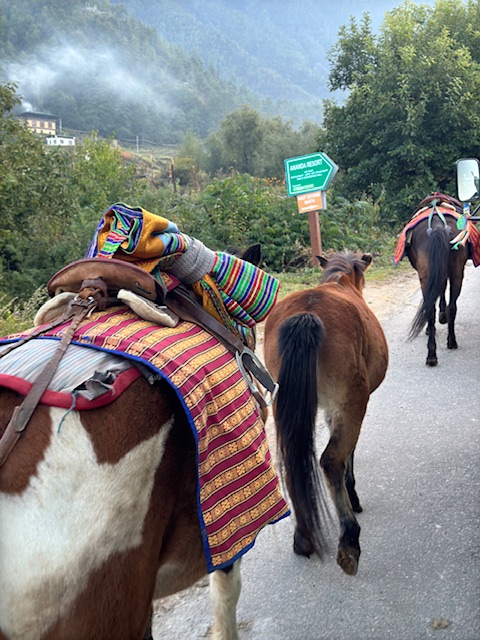
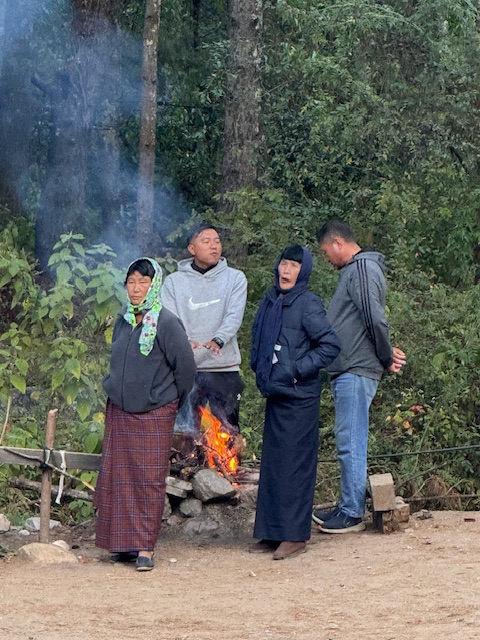
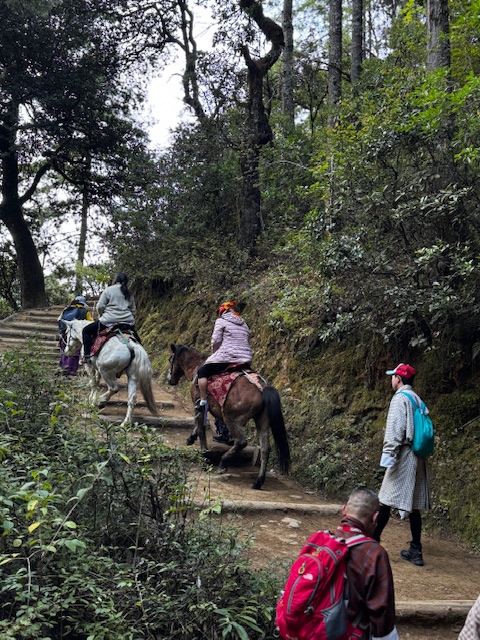
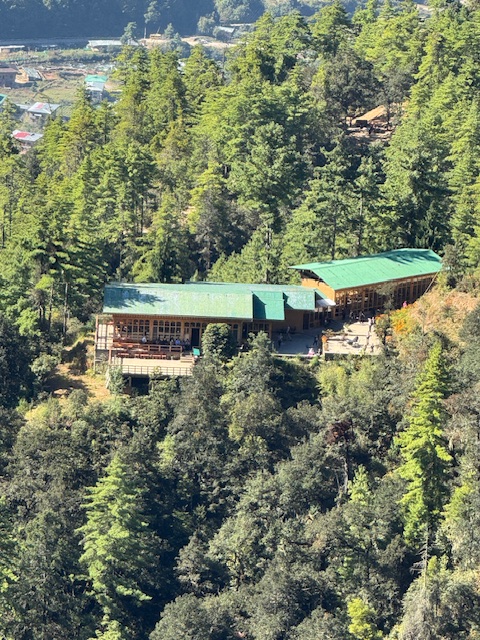
The first half of the hike is a gradual gain in altitude, but always up, up, and away. Not sure how gradual it was, but it sure looked like a 45-degree angle to me. The climb is filled with switchbacks, and meanders through pine forests; dotted with prayer wheels, colorful prayer flags, and scenic viewpoints along the way … things to help take your mind off the grind.
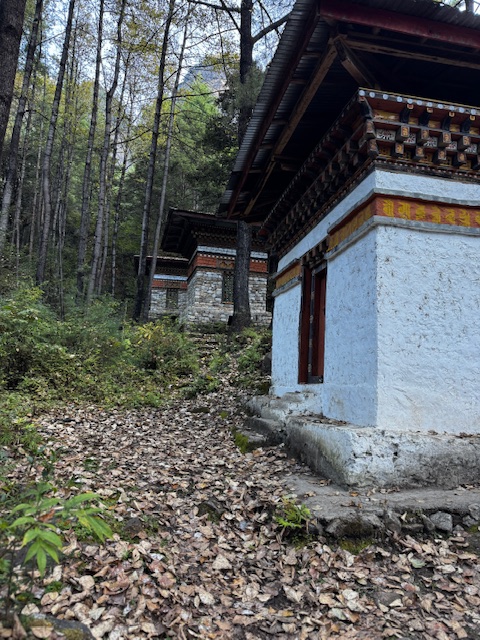
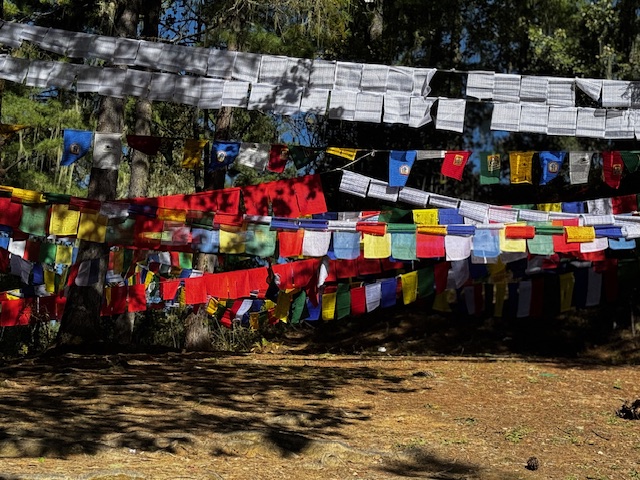
Then, my asthma kicked in. My inhaler became my best friend, with shots every 100 feet or so … as my shortness of breath almost made me want to give up the whole affair, but my fellow travelers were of the “no one is left behind motto.”
The classic little devil and angel sitting upon my shoulders squabbled and argued incessantly with one another, “Give up, sucker!” “Keep going, my friend, you can do it!”
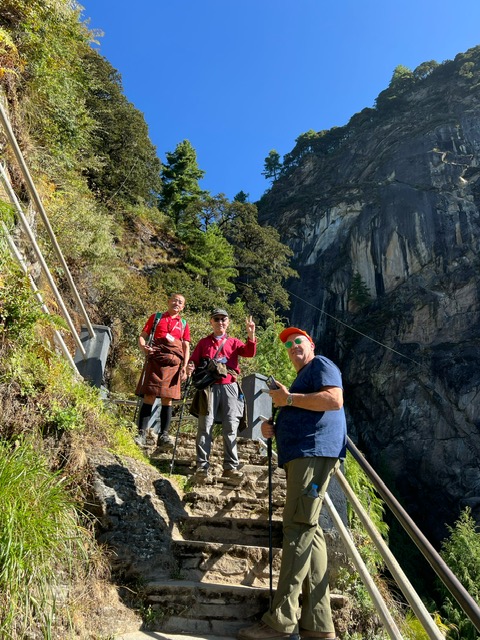
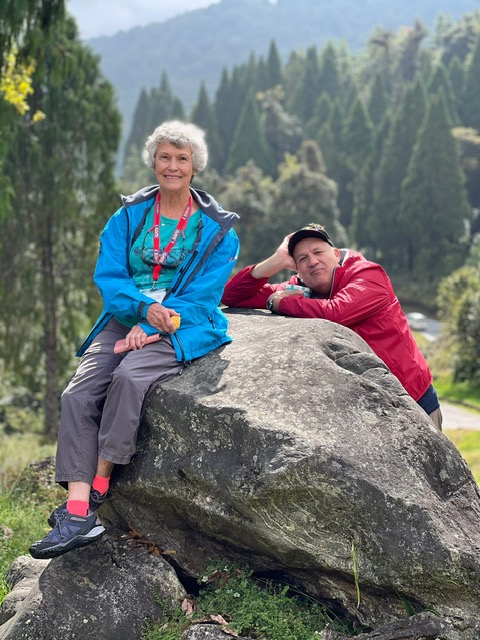
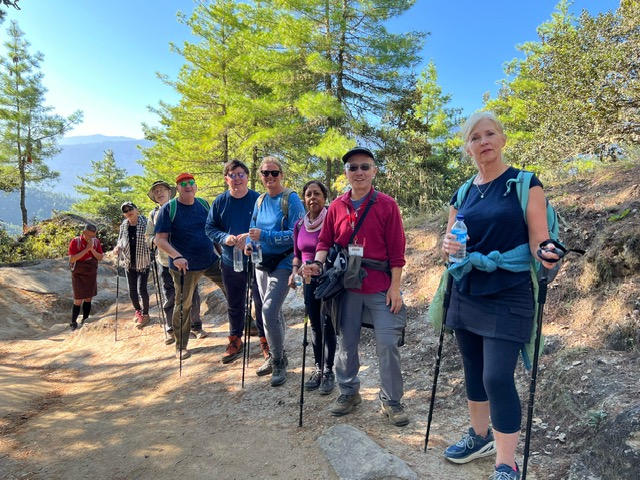
We reached the cafeteria at the midway point for a well-deserved rest, and it provided us with stunning views of the monastery … so close, yet still so far. A cappuccino with an extra shot of espresso would do the trick for me … my body’s reaction to the combo of caffeine and albuterol was bionic combustion. Onward Ho!
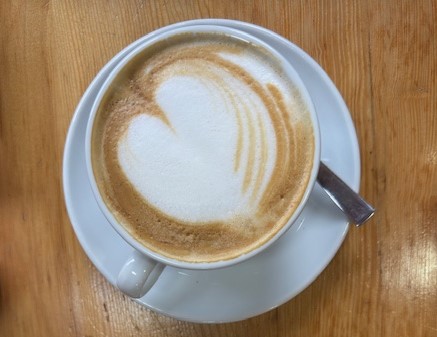
The second half of the climb, although steeper with curved and carved pathways, was made easier by being well-caffeinated and aerated, and was a walk in the park.
Then, coming to the part of the trail that brings you within sightline of the monastery across the gorge, the excitement and anticipation builds. Here begins the most iconic section of the hike; with 700+ stone steps going down towards a narrow, cliffside bridge, spanning over a thunderous waterfall.
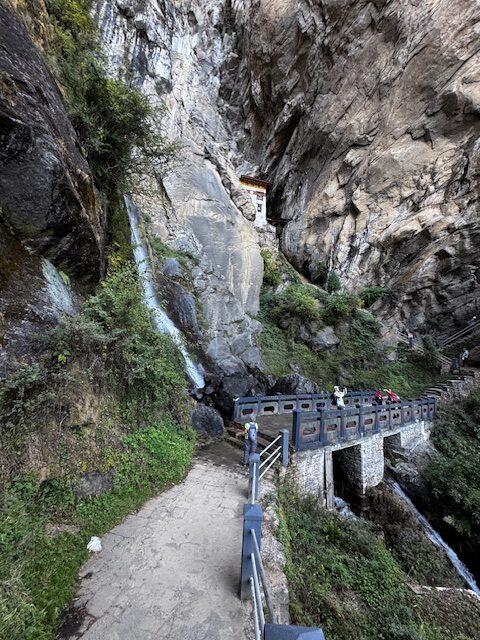
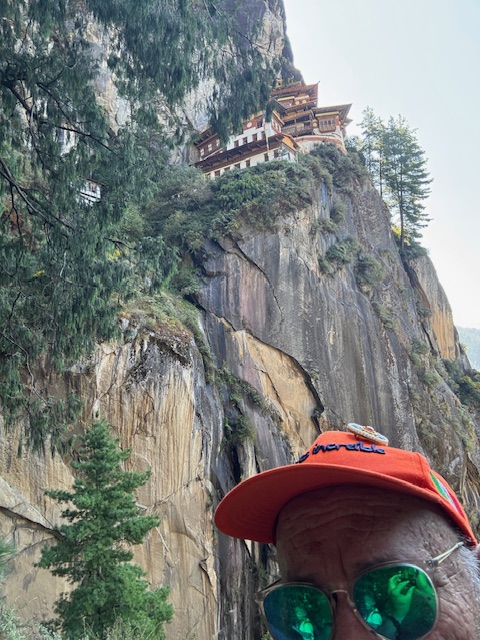
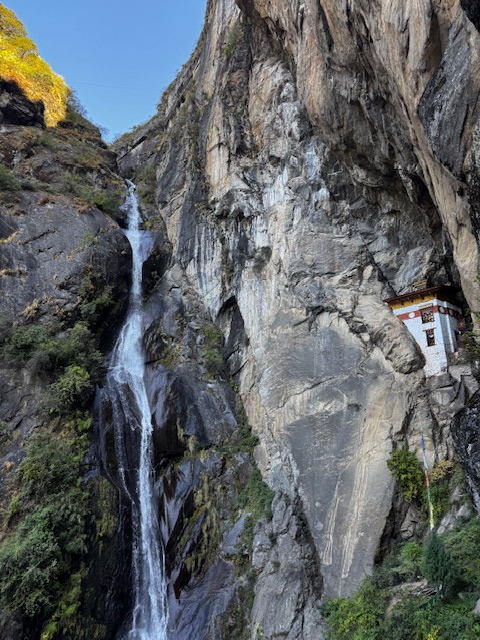
Then, after crossing the bridge over the waterfall, there’s 500+ steps going back uphill leading to the monastery entrance. It’s quite a trek and worth the price of admission!
From start to finish, the entire trip is over 4 miles … taking over 5 hours roundtrip… with over 2,400 steps … and an altitude change from 8,000’ to over 10,000’ above sea level. Phew!
Once we “landed” upon the holy site, sadly there’s no welcoming committee to greet us weary travelers. However, upon entering, we had to surrender our possessions, since there is no photography allowed inside the monastery. They take it one step further – a full body pat down. I felt like telling the guard, “Buy me a drink first, fella!”
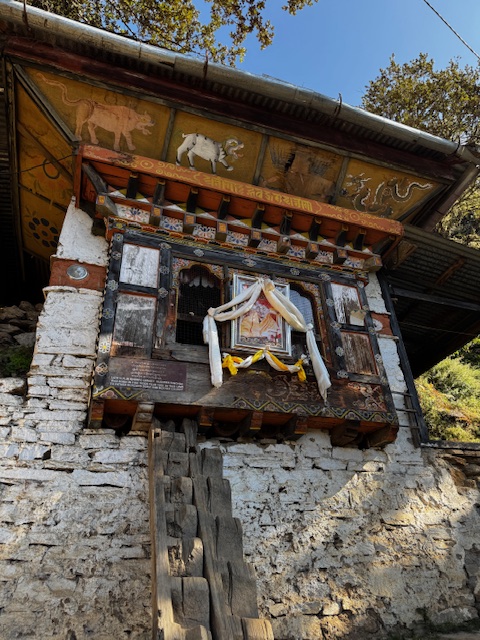
Safe and secure inside, more steps led us to sacred shrines, meditation caves, and colorful Buddhist murals. The monastery remains an active place of worship, and its powerful energy could be felt as you placed your hands onto the mountain rocks that it’s attached to.
I was so re-energized that I swear there was a hop and a skip to my walk all the way back down to our waiting bus … with a lunchbreak at the cafeteria.
Now I can happily answer the “WHY?!” question from my childhood with these superlatives …
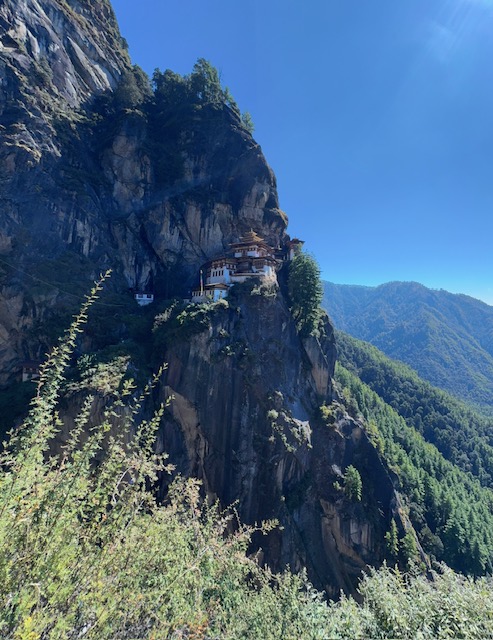


Spiritual and cultural significance; incredible scenic views; a sense of great accomplishment from a great physical challenge; the magnificent monastery itself; a connection to Bhutan’s natural beauty and heritage; a place of peace, serenity and reflection; and most of all an unforgettable experience!
We shared one final meal together at the hotel with my Gate 1 Travel mates: Julia, Michael and Diana, Jessie and Peter, Cathy, Oriana, and Jian; giving us one more time to reflect upon the wonders of this unspoiled part of the world, before flying to Kathmandu, and we all go our separate ways.
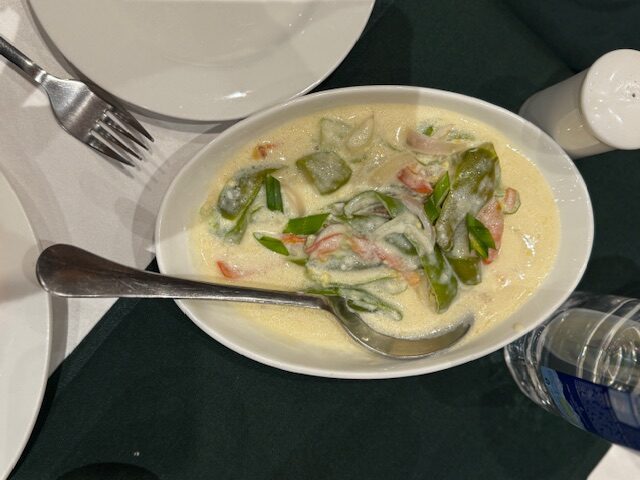
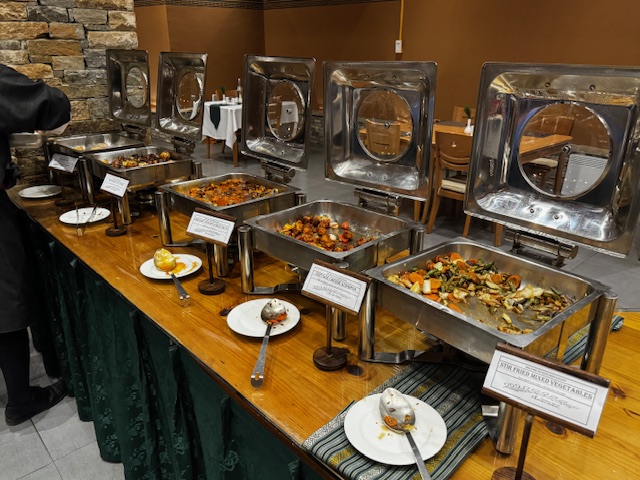
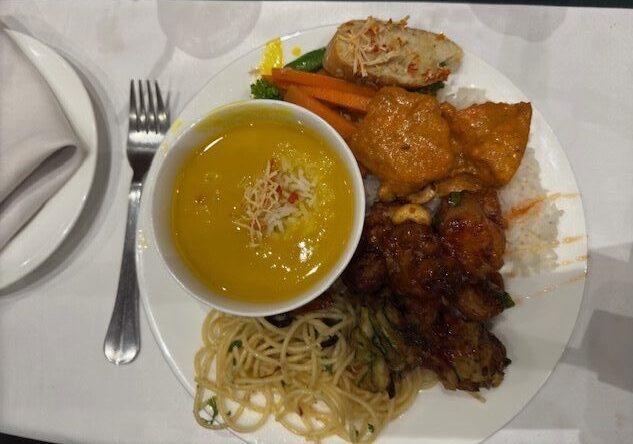

In my travels, I’ve had my share of guides, but only few memorable ones: Mr. Tick Tack in Thailand, Akim in Turkey, Olga in the old Czechoslovakia, and now, Leki in Bhutan. He shared his endless knowledge and love for his country, all provided with great enthusiasm; making this trip a very personable, pleasurable one. It felt like I was guided throughout Bhutan by a good friend.
I’ve traveled to many places in the world, with a few giving me the feeling of home, but here in Bhutan I felt rooted.
There’s a sense of serenity and civility that envelops this mountainous country. Their smiles and welcoming friendliness are sincere, and heartwarming, and there’s a sense of innocence not found in western cultures. There’s hope in their future as they continue to keep the balance that makes this country the happiest place on Earth.
I came across this simple quote that expresses my feelings better than I’ve been able to express in my blog.
“Bhutan, a destination that leaves footprints on your soul and memories etched in your heart.” ~ Unknown
Many thanks for traveling along with me in this memorable high adventure!
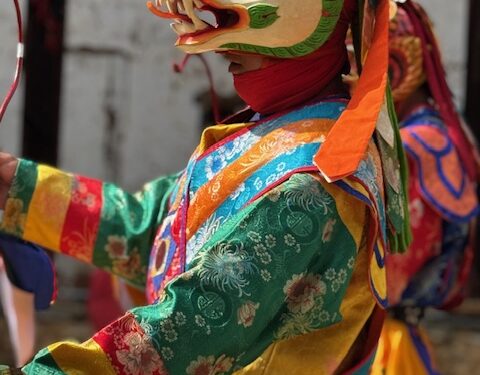
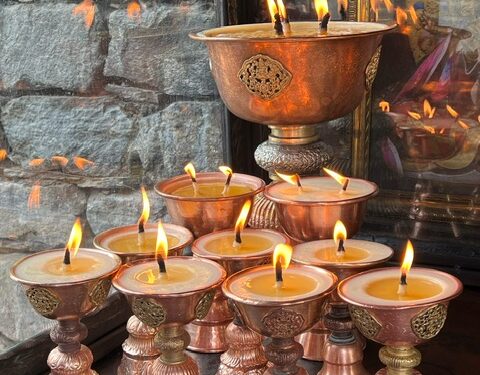


this is truly a wow- first a structure that sophisticated, strong and beautiful built im 1646 simply astounds me
secondly — YOU DID IT- the trek up to Tigers Nest- i know how important that was to you- im so proud of you and i would have been huffing my Xopanex too!
I am stunned once again by the vibrant colors, the architecture, the people of Bhutan! Thanks so much for sharing your adventure with us!